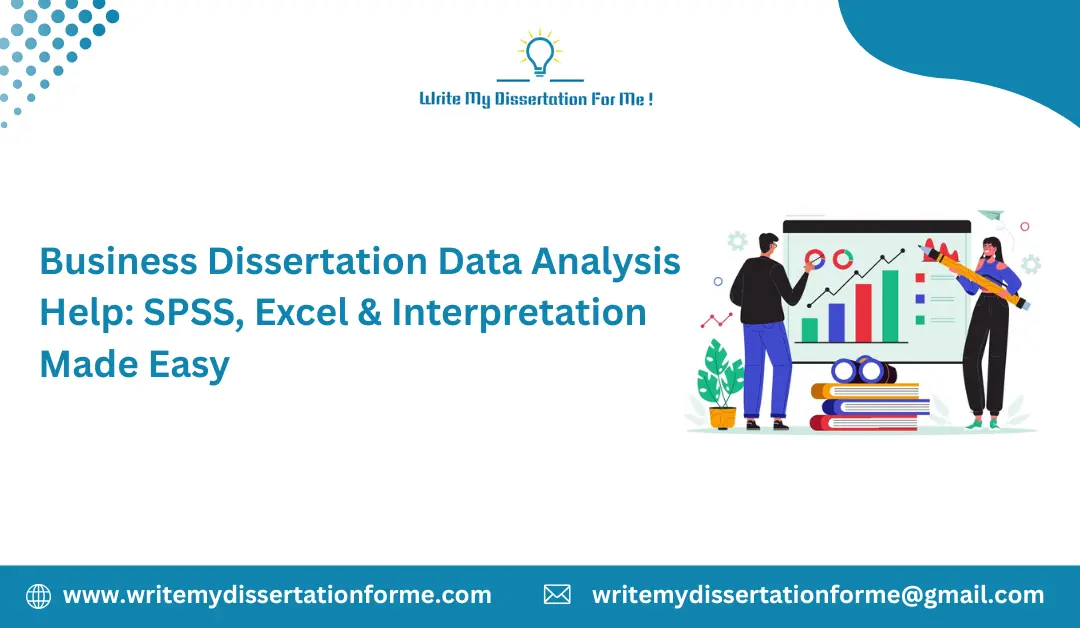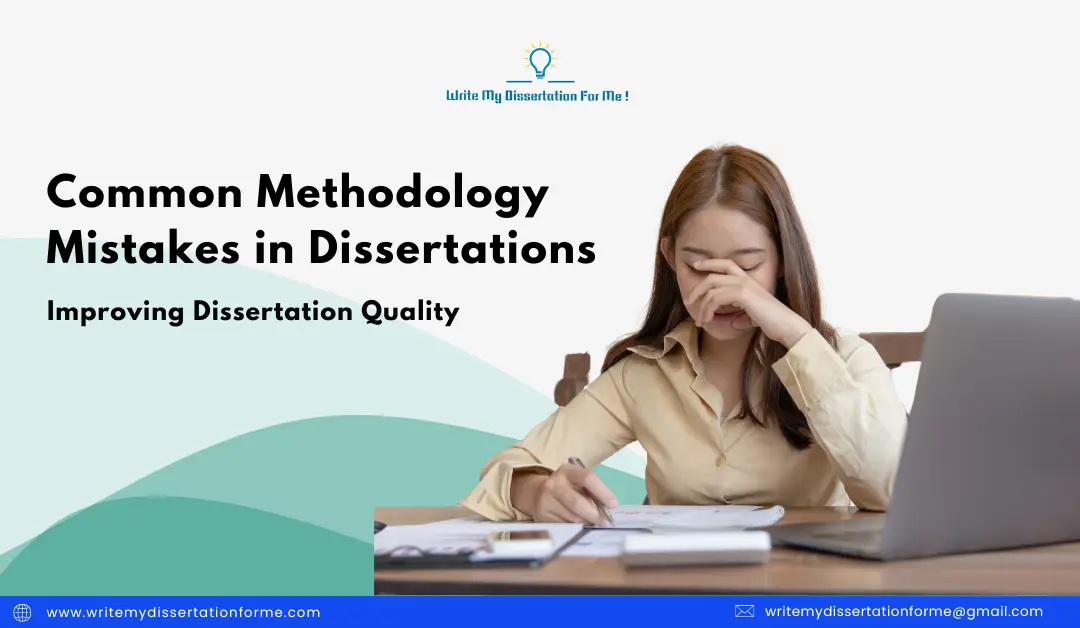Business Dissertation Data Analysis Help: SPSS, Excel & Interpretation Made Easy
October 09 2025 | 05 min read

The foundation of any business dissertation is data analysis. Your conclusions depend on how well you evaluate and interpret your data, whether you're looking at organizational strategy, financial performance, or customer behavior. However, this phase turns into a barrier for a lot of students since it is full of technical difficulties, unclear software, and anxiety related to interpretation.
This blog explains how to use SPSS and Excel to streamline data analysis for business dissertations and how to create an interpretation that is academically solid, compelling, and easy to understand. This guide will assist you in transforming unprocessed data into refined insights, regardless of your academic background—marketing, finance, or management.
The Significance of Data Analysis in Business Dissertations:
Empirical research, such as surveys, case studies, experiments, or secondary data, is frequently used in business dissertations. You can validate your model, find patterns, or confirm your theory during the analysis stage. Your dissertation runs the risk of becoming descriptive rather than analytical if you don't have a strong analysis.
Robust data analysis
- gives your research more legitimacy.
- demonstrates the rigor of your methodology.
- enables you to make actionable conclusions
- Examiners are impressed by its depth and clarity.
Selecting the Correct Tool: Excel vs. SPSS:
Although they have diverse uses, SPSS and Excel are both frequently employed in business research.
The Statistical Powerhouse: SPSS
Statistical Package for the Social Sciences, or SPSS, is best suited for:
- Analysis of regression
- MANOVA and ANOVA
- Analysis of factors
- Testing for reliability (Cronbach's alpha)
- Chi-squared assessments
Large datasets or intricate statistical models are better suited for SPSS in dissertations. Additionally, it is the preferred method for survey-based research that uses categorical data or Likert scales.
Excel: The Multipurpose Worker
Excel is ideal for:
- Data organization and cleansing
- descriptive statistics, such as the mode, median, and mean
- Turn tables and charts around.
- Analysis of time series
- Basic trend analysis and correlation
Excel is an excellent tool for data visualization and is easy to use. It’s often used in finance, operations, and marketing dissertations where the focus is on performance metrics or forecasting.
Step-by-Step Guide to SPSS Analysis:
Assume you have gathered survey information on customer satisfaction in relation to five service dimensions. Here's how to use SPSS to analyze it:
- Input of Data: Either manually insert your dataset or import it from Excel. Each row represents a variable for each column, representing a respondent.
- Variable Labeling: Put a clear label on each variable, such as "Service Quality," "Responsiveness," or "Price Satisfaction." When dealing with categorical data, use value labels.
- Testing for Reliability: To check for internal consistency, use Cronbach's alpha. Reliable scales are indicated by a score greater than 0.7.
- Characteristic Data: Utilize "Descriptives" and "Frequencies" to comprehend the mean, standard deviation, and skewness of your data distribution.
- Analysis of Correlation: Use Pearson's correlation to examine the links between variables. This makes it easier to determine which factors are related.
- Analysis of Regression: To find out how independent factors, like price and service quality, affect the dependent variable, like overall satisfaction, use linear regression.
- Interpretation: Report more than just stats. Describe their meaning. As an illustration, "Service quality significantly increased satisfaction (β = 0.45, p < 0.01), suggesting that better service delivery could increase customer loyalty."
Detailed Instructions for Excel Analysis:
Let's say you are examining regional sales data on a quarterly basis. This is how Excel can be useful:
- Cleaning of Data: Get rid of duplicates, deal with missing values, and correctly format currencies and dates.
- Characteristic Data: To summarize your data, use built-in methods like AVERAGE, MEDIAN, and STDEV.
- Tables with pivots: To compare sales across time periods, geographies, or product categories, create pivot tables.
- Graphs and Charts: Use scatter plots, bar charts, and line graphs to visualize trends. For interactive dashboards, use slicers.
- Prediction: Using previous data, forecast future sales using Excel's Forecast Sheet.
- Interpretation: As an illustration, sales in the North region increased by 15% overall between Q1 and Q4. This points to successful regional efforts and significant market penetration.
Common Pitfalls and How to Avoid Them:
- Variable Mislabeling: Always double-check your variable names and labels. Inaccurate analysis may result from mislabeling.
- Ignoring Premises: Assumptions for statistical tests include independence, homoscedasticity, and normality. Breaking them could render your findings invalid.
- Excessively Complicated Models: Adhere to models that correspond with your research inquiries. Regression analysis should not be performed merely because it appears impressive.
- Inaccurate Interpretation: Steer clear of explanations full of jargon. Clarity is your aim. Explain the meaning of the numbers in simple terms.
How to Write the Data Analysis Chapter:
The structure of your analysis chapter should make sense:
- Overview: Restate your research questions in brief and describe the analysis's goal.
- Approach Review: List your techniques for gathering and analyzing data in brief (e.g., "Survey data analyzed using SPSS regression").
- Characteristic Data: Display the distribution of your data in tables and charts.
- Statistical Inference: Provide the significance levels for the test results, including ANOVA, regressions, and correlations.
- Interpretation: Describe the significance of the findings in light of your research questions or hypothesis.
- Summary: Conclude by summarizing the main conclusions and moving on to the discussion section.
Tips for Making Interpretation Easy:
- subheadings for every variable or test
- Add figures and tables with concise captions.
- Emphasize important discoveries in bold.
- For clarity, use bullet points.
- Connect results to theory and literature.
Where to Look for Assistance:
Don't freak out if you're having trouble understanding Excel formulas, SPSS syntax, or interpreting your results. Data analysis for business dissertations is a specialty of several professional services. Assistance is available whether you need someone to clean your dataset or explain regression results.
When pressure builds, some students look up to write my dissertation for me. To deal with the technical aspects, some people seek out do my dissertation for me services. However, dissertation help online can be a more adaptable option if you're sure of your subject and only require focused assistance.
These services frequently provide:
- Analysis using Excel and SPSS
- Interpretation and assistance with writing
- Individual tutoring
- Results free from plagiarism
- Quick turnaround
Final Thoughts:
Analyzing data doesn't have to be scary. You can turn your unstructured data into insightful knowledge with the correct tools, a little direction, and a clear framework. The important thing is to remain organized, analyze your data in a meaningful way, and match your findings to your study objectives, regardless of whether you're using Excel for visual clarity or SPSS for statistical depth.
Keep in mind that your dissertation is about more than simply the data; it's about the narrative those numbers convey. Make it matter.
If you loved reading this, please share this,
also read

Common Methodology Mistakes in Dissertations: Improving Dissertation Quality
The methodology section is crucial to the complex process of writing a dissertation, which necessitates an organized approach...

Custom Dissertation Writing Service
Writing a Dissertation is about researching, writing, and refining the course. Writing a dissertation starts with planning...

The Role of Technology in Modern Dissertation Writing
The introduction and incorporation of technology have significantly changed the face of academic research and dissertation wr...